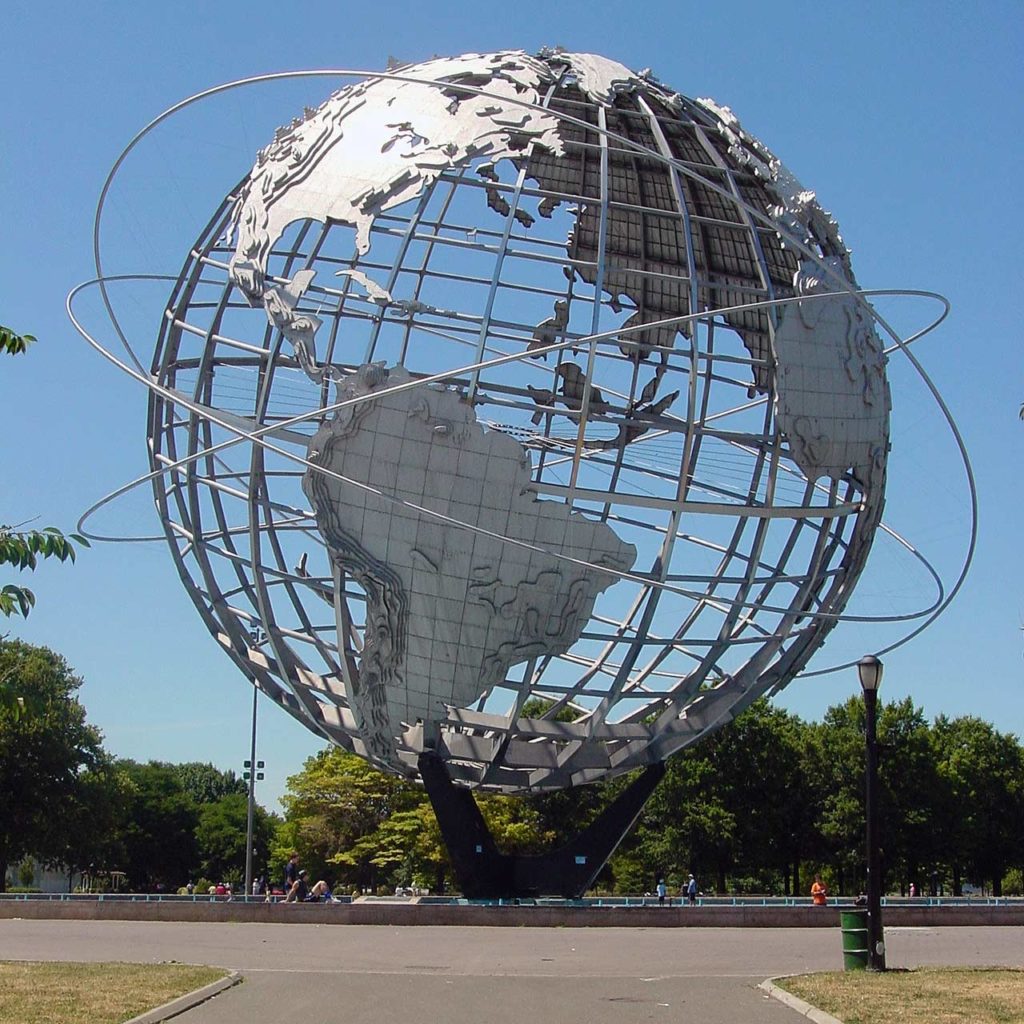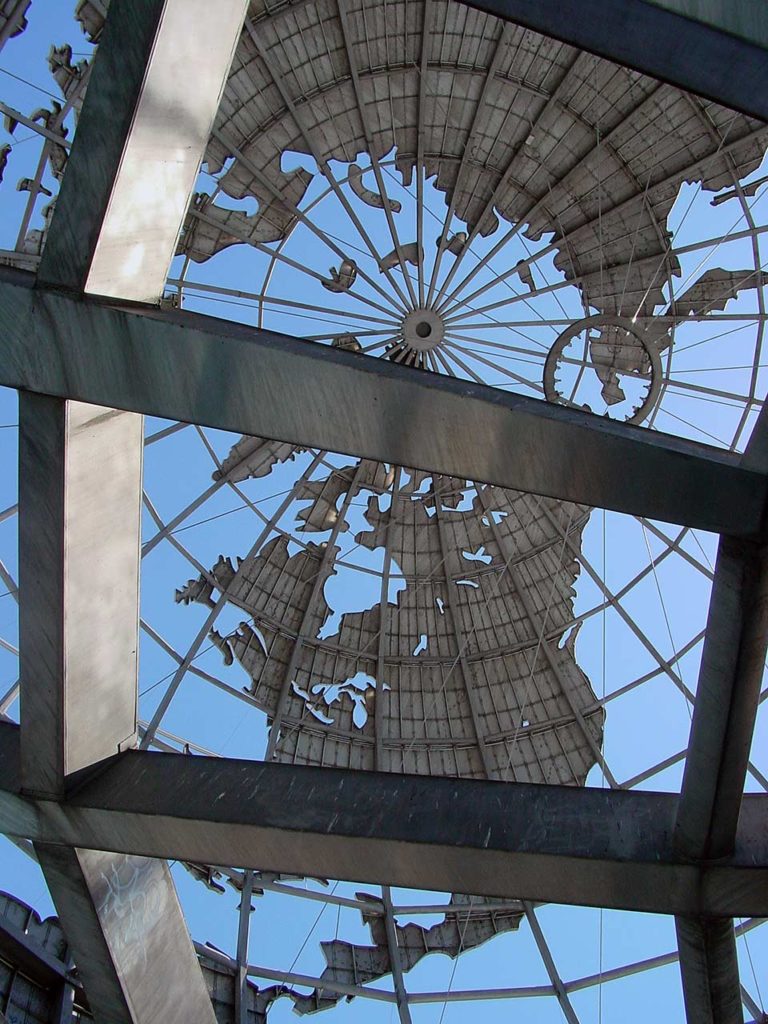Unisphere
Flushing Meadow-Corona Park
Queens
Natural History special issue
Part of City of Stars photo essay.

“Dedicated to man’s aspirations toward Peace through mutual understanding and symbolizing his achievements in an expanding universe.” So reads the dedication plaque for the Unisphere, built by the United States Steel Corporation and presented to the New York World’s Fair, April 22, 1964. This 700-ton, stainless-steel Earth sculpture looks much bigger in person than its vital statistics might suggest. You do not normally encounter non-rectangular structures this large—140 feet high and 120 feet in diameter—especially when the largest things nearby are the two-story-tall Queens Museum of Art and lampposts situated along the walkways.
As does our planet in space, this Earth tips 23½° on its axis. The continents are clad with topological features that indicate the world’s most prominent mountain ranges, such as the Alps, the Andes, the Himalaya, and the Rockies. The tallest mountains rise three or four feet above sea level on this globe, which gives the badly misleading impression that Earth has a bumpy surface. If the real Earth were shrunk down to the size of the Unisphere, then Mount Everest, for example, and the entire Himalayan mountain range surrounding it, would stick out only about an inch.

Two years before the Unisphere was dedicated, John Glenn became the first American to orbit Earth. The Soviet cosmonaut Yuri Gagarin orbited Earth first, but only once, a year before. John Glenn circled Earth three times before splashing down in the Pacific Ocean. The three tilted rings are as much a symbol of his orbits as they are a symbol of our future as a space-faring people. The bit about the “expanding universe” from the dedication plaque, however, has no relation to anything. It probably just sounded good to the authors.
This site was used as the backdrop to the final battle scenes between humans and alien insects in the campy 1997 film Men in Black. And it shows up as a regional icon in every commercial break during the U.S. Open tennis matches, about a half mile away at the National Tennis Center.

